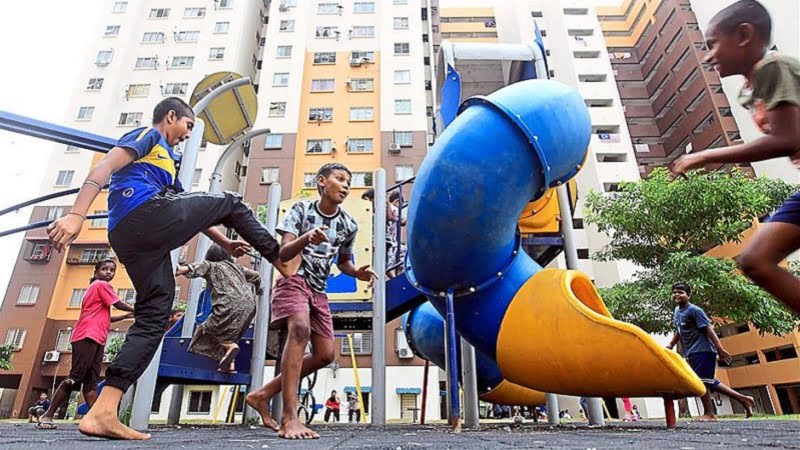Here’s Why I’ll Never Buy An Affordable Home

Table of Contents
Earlier this year, many Malaysians expressed gratitude towards the government for the 1Malaysia People’s Housing Scheme (PR1MA), calling it a blessing.
Even in this day and age, owning a home is a basic desire for most but with wages not keeping up with the rising cost of living, being the proud owner of some real estate has been nothing but a dream for many.
But tight finances are no killjoy: According to the Real Estate and Housing Developers’ Association Malaysia, more than half of Malaysians want to own a home within the next six months.
One hack to get you the property of your dreams is to apply for affordable housing. PR1MA is one scheme that easily comes to mind as it caters to the middle class and is currently the buzz. (This table gives you a detailed description on other affordable housing options besides PR1MA.)
Yet I am not convinced that this is the way to go when it comes to homeownership. My beef with affordable housing schemes is as follow:
Let’s talk location
As I scanned for PR1MA properties around the Klang Valley, I noticed that those closer to the city are demanding prices above RM200,000. That in some ways makes PR1MA a major contender and competitor to private developers in the massive M40 market.
While there are some enticing properties in the pipeline such as the PR1MA project in Brickfields (adjacent to KL Sentral), existing ones are anything but near the city. For example, the apartment complex at Alam Damai, Cheras starts from RM245,000 upwards.
If I am working in the city centre, Alam Damai is the last place I’d stay as I have to factor in petrol and other travel costs, which has been on an uptick recently.
| Monthly transportation cost to work | |
|---|---|
| Distance from Alam Damai to Damansara Heights | 20km |
| Total mileage in a month | 800km |
| Total toll | RM40 |
| Estimated petrol cost (RM1.93/litre of RON95)* | 48 L x RM1.93 = RN92.64 |
| Monthly season parking cost | RM250 |
| Total monthly cost | RM382.64 |
What about the MRT/LRT option, you ask? Now I am a big fan of our public transport service and I use to commute daily. But it is only worthwhile if it helps me save money and time – presently that is the case for me.
According to Google Map, public transportation will take roughly 2 hours and 50 minutes from Alam Damai to Wisma UOA Damansara!
Long commutes at a premium ain’t going to cut it, especially when there are subprime properties around the city which are going for RM350,000 and are about a 15-minute drive to the capital.
And you can’t sell it…
According to the Finance Act 2014, anyone who sells their property is required to pay Real Estate Property Gains Tax (RPGT).
It is a tax on chargeable gains derived from disposal of property. A chargeable gain is the profit when the disposal price is more than the purchase of the property.
Did you know?
RPGT is also applicable in the procurement and disposal of shares in companies where 75% of their tangible assets are in properties.
RPGT applies to residents and non-residents.
Here’s a breakdown of the prescribed tax rate for Malaysians:
| First to third year | 30% |
| Fourth year | 20% |
| Fifth year | 15% |
| Sixth year onwards | 0% |
Now if this will be my first property, I will be exempted from paying RPGT. If not, I will have to sell the property after six years to escape from paying RPGT. Also I stand a chance to be exempted from the 3% disposal price that my lawyer or I need to pay.
However, if I am successfully balloted for a PR1MA home, I am not allowed to sell, dispose or rent – yes, even rent – my unit until the expiry of the moratorium period, which is 10 years for outright purchases and 15 years for those participating in the rent-to-own scheme.
Now this inflexibility throws a wrench in my plans: What happens if I have to move to a different location due to work while the moratorium is enforced? This means I have to fork out extra cash to just maintain the property as I can’t rent it out, while forking out more money to rent another place near where I work.
And there’s balloting and ring-fencing
Well, balloting also happens to any prime property but consider this: according to PR1MA, about 21,672 units will be up for sale throughout the country this year.
That’s great, but how many Malaysian’s have registered with PR1MA so far? More than 1.4 million.
Yes, with more than 1.4 million, there will be a mad rush to snatch these units and competition is stiff.
And this not only applies to PR1MA but almost every other affordable housing scheme whether it’s a balloting or screening process that’ll get in the way.
Also, if you have been following PR1MA developments, you’ll definitely have heard of the new end-financing scheme. The plan was rolled out after Malaysians were struggling to get loans for PR1MA homes.
With some financial smarts, I can use my Account 2 to either pay off a PR1MA property or even a conventional home that is within a certain price range.
But the moment I tap into the end-financing scheme, my Account 2 will be frozen until I clear off the loan. This means during that loan-payment period, I can’t make withdrawals for medical emergencies or my child’s tertiary education.
A worthwhile investment?
Personally, a house has to serve two purposes: it’s a home and an investment. And by investment I also mean the ability to draw a passive income from my piece of real estate via renting if I choose not to live in it.
Location and environment matter too. Accessibility to public transport and even major roads to the city are equally important.
At writing time, there are no PR1MA units even close to the MRT stations, so hopefully that will transpire and grant citizens, especially from the B40 and M40 groups, easier access to the city and a chance at owning some prime real estate.
There’s word that about 4,000 PR1MA units will be built nearby selected LRT stations. It was announced in 2013, but the plan is still being fine-tuned.
While those are in the pipeline, I am not going to have my EPF Account 2 ring-fenced, but I might use the Account 2 for some property-related payments.
Actually, I can still land a PR1MA using my Account 2 without the end-financing scheme (Check out this table for a comparison between a non-SPEF and SPEF financing plan).
But there’s that nagging statistic – about 40% of Malaysians are not ready for retirement and that 70% of us struggle to save RM1,000 a month.
So while a 110% financing scheme is great, it only serves its purpose if I can refinance the loan and pay down the mortgage while freeing up my Account 2.
But, ultimately, I will not go the way of affordable housing is simply because these projects are for the people who really need it: the bottom 40.
The rest of us, I believe, can either wait it out for our salaries to hopefully increase in line with house prices, start saving up or we’ll just have to rent.
In fact, the latter option is reasonable given that the worse that can happen if you fail to pay rent is eviction. But the upside is your credit health won’t be affected.
So what if I want to purchase a home in the near future? First, I’ll have to think long-term and be ready to commit and sacrifice. Next, I would clear any outstanding debt – credit cards, especially. This frees up my cash flow and gives me more disposable cash. Of course I would also take up a part-time job or start a side hustle.
Also the side-hustle acts as a buffer in case I get retrenched or for some reason quit my full-time job. Unemployment is real and while I can’t control it, I can ensure I have multiple revenue streams.
Only when these are in place, will I look for a property. I will definitely have to adjust as I don’t carry gold in my pockets so I would go by the rule of having a debt-service-ratio of about 30%, meaning that I would not be spending more than one third of my income on debt repayment. In this case, it would be solely servicing my home loan.
Too difficult? I never said it was easy. But a house is beyond just a home – it’s an investment.
That’s why I rather eke out a living to pay off a conventional home as opposed to an affordable one.











